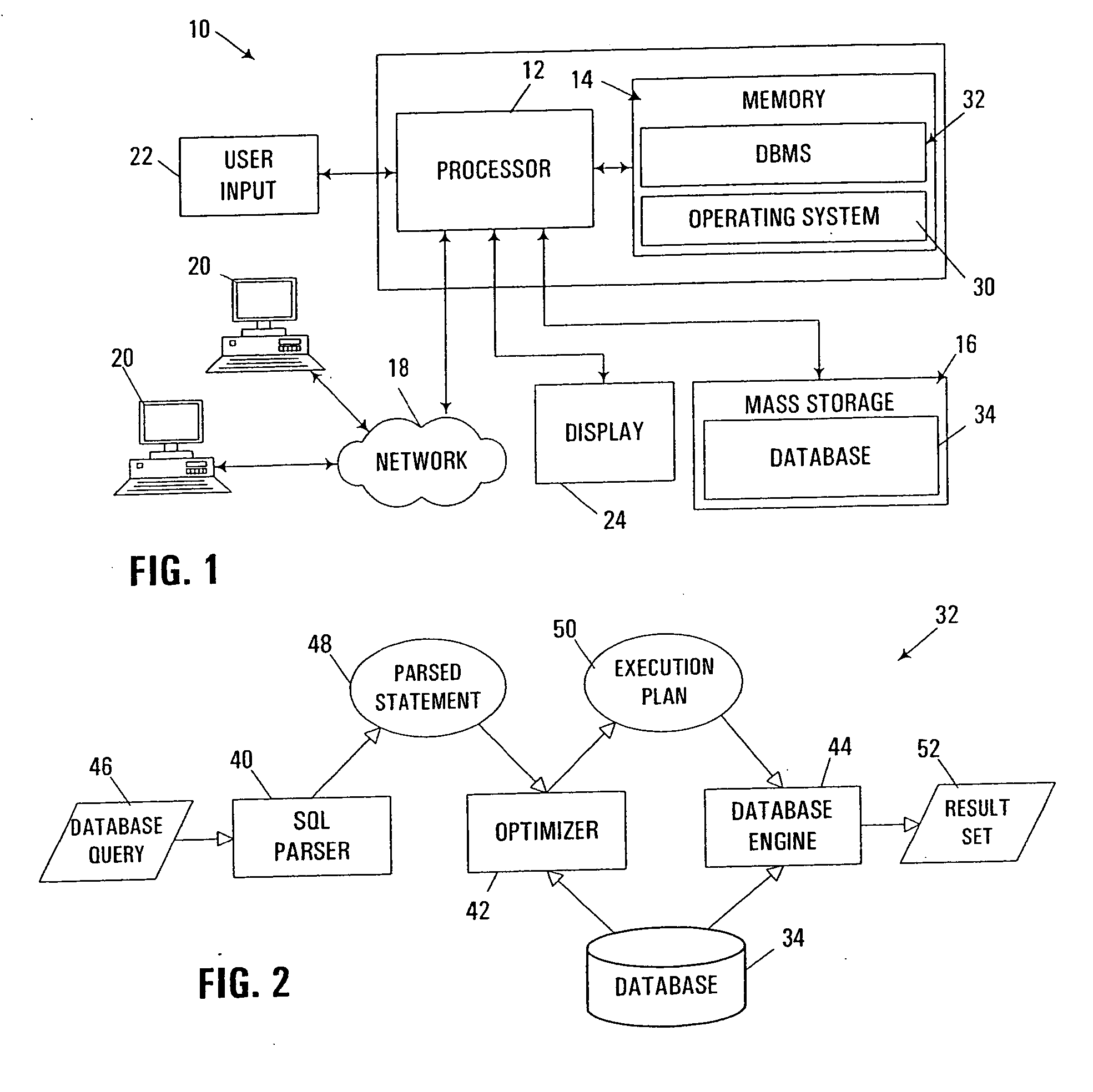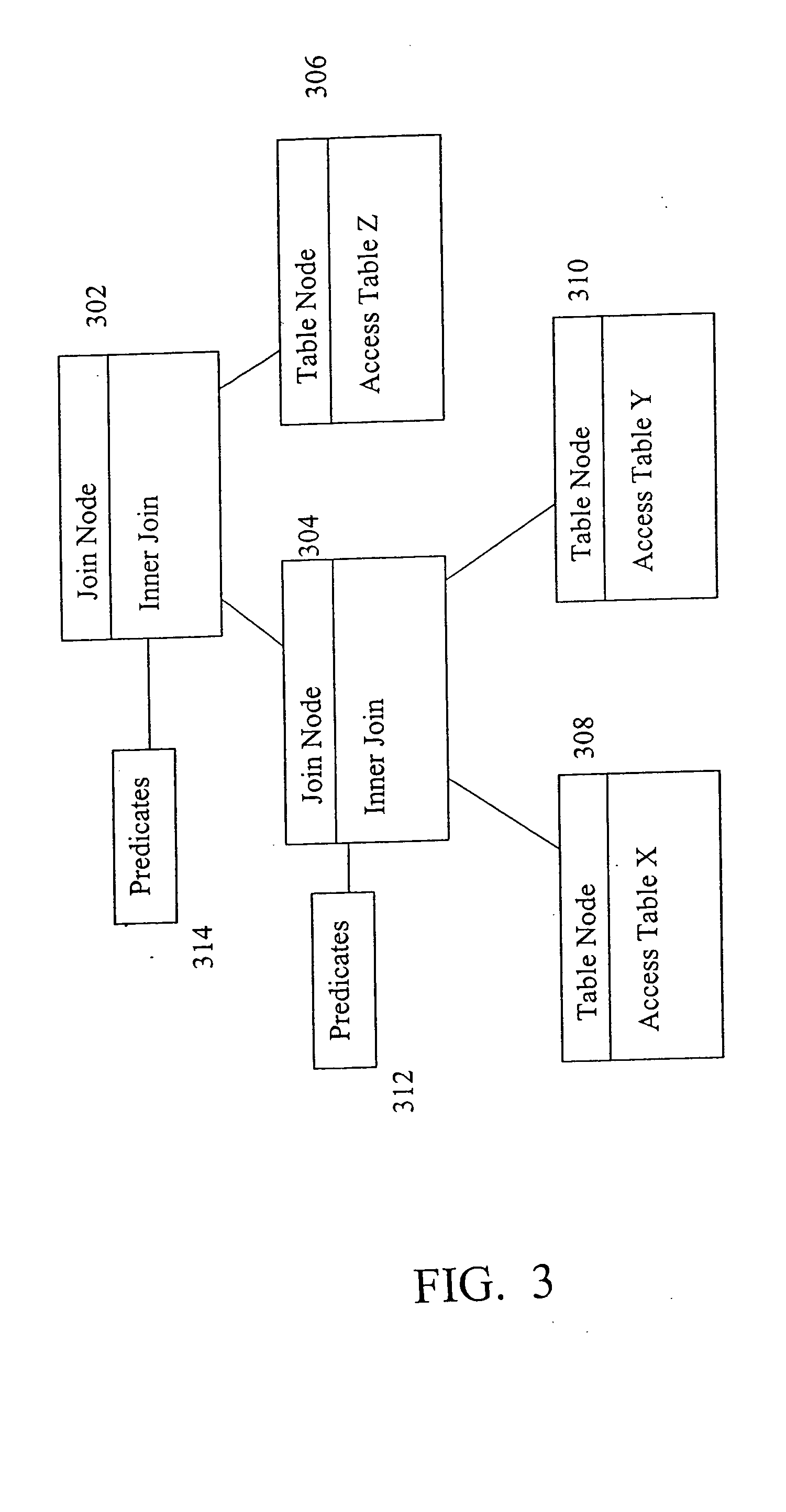Method and system for dynamic join reordering
a dynamic join and order technology, applied in the field of database management systems, can solve the problems of increasing the amount of computing resources required to manage such a database, requiring tremendous resources to handle the heavy workload placed on such systems, and further increasing information volume and workload. , to achieve the effect of better performance, better performance and better performance results
- Summary
- Abstract
- Description
- Claims
- Application Information
AI Technical Summary
Benefits of technology
Problems solved by technology
Method used
Image
Examples
Embodiment Construction
As mentioned above, the embodiments discussed hereinafter utilize a database engine and optimizer framework that support the dynamic reordering of join order when executing a query. The database engine, by monitoring the performance of different join operations during the execution of the query, can select a join order to improve the performance of the query. A specific implementation of such a database engine and optimizer framework capable of supporting join reordering in a manner consistent with the invention will be discussed in greater detail below. However, prior to a discussion of such a specific implementation, a brief discussion will be provided regarding an exemplary hardware and software environment within which such an optimizer framework may reside.
Hardware / Software Environment
Turning now to the Drawings, wherein like numbers denote like parts throughout the several views, FIG. 1 illustrates an exemplary hardware and software environment for an apparatus 10 suitabl...
PUM
 Login to View More
Login to View More Abstract
Description
Claims
Application Information
 Login to View More
Login to View More - R&D
- Intellectual Property
- Life Sciences
- Materials
- Tech Scout
- Unparalleled Data Quality
- Higher Quality Content
- 60% Fewer Hallucinations
Browse by: Latest US Patents, China's latest patents, Technical Efficacy Thesaurus, Application Domain, Technology Topic, Popular Technical Reports.
© 2025 PatSnap. All rights reserved.Legal|Privacy policy|Modern Slavery Act Transparency Statement|Sitemap|About US| Contact US: help@patsnap.com



